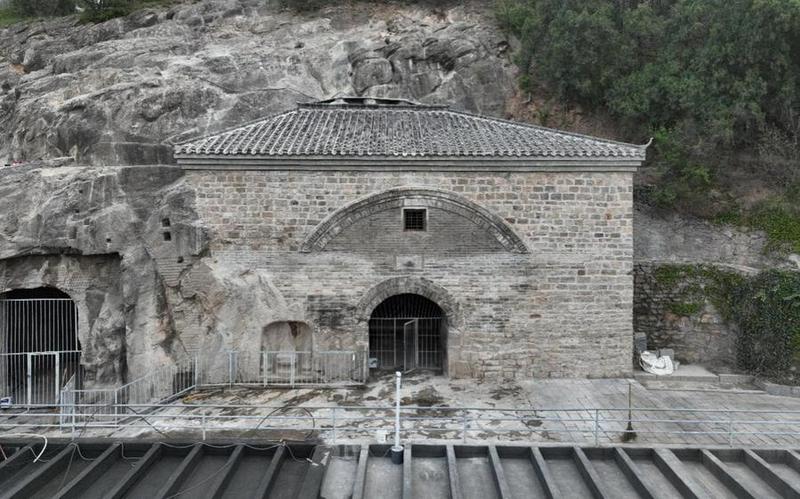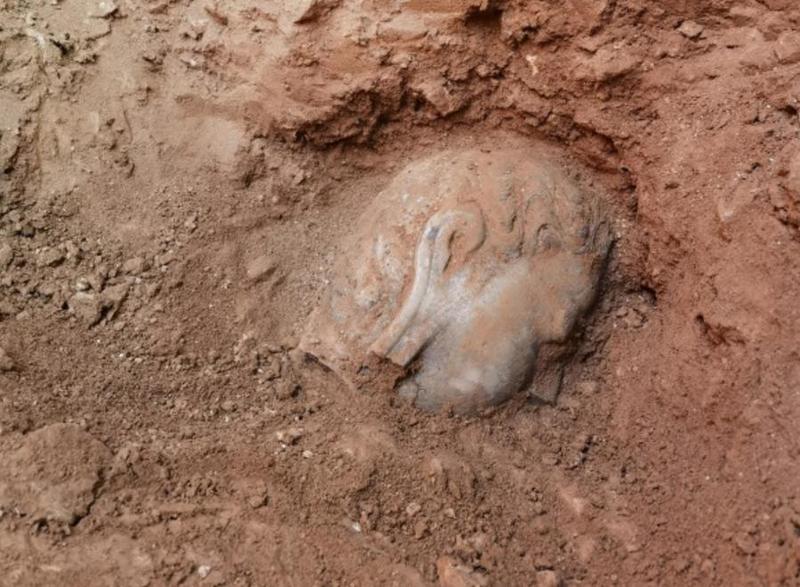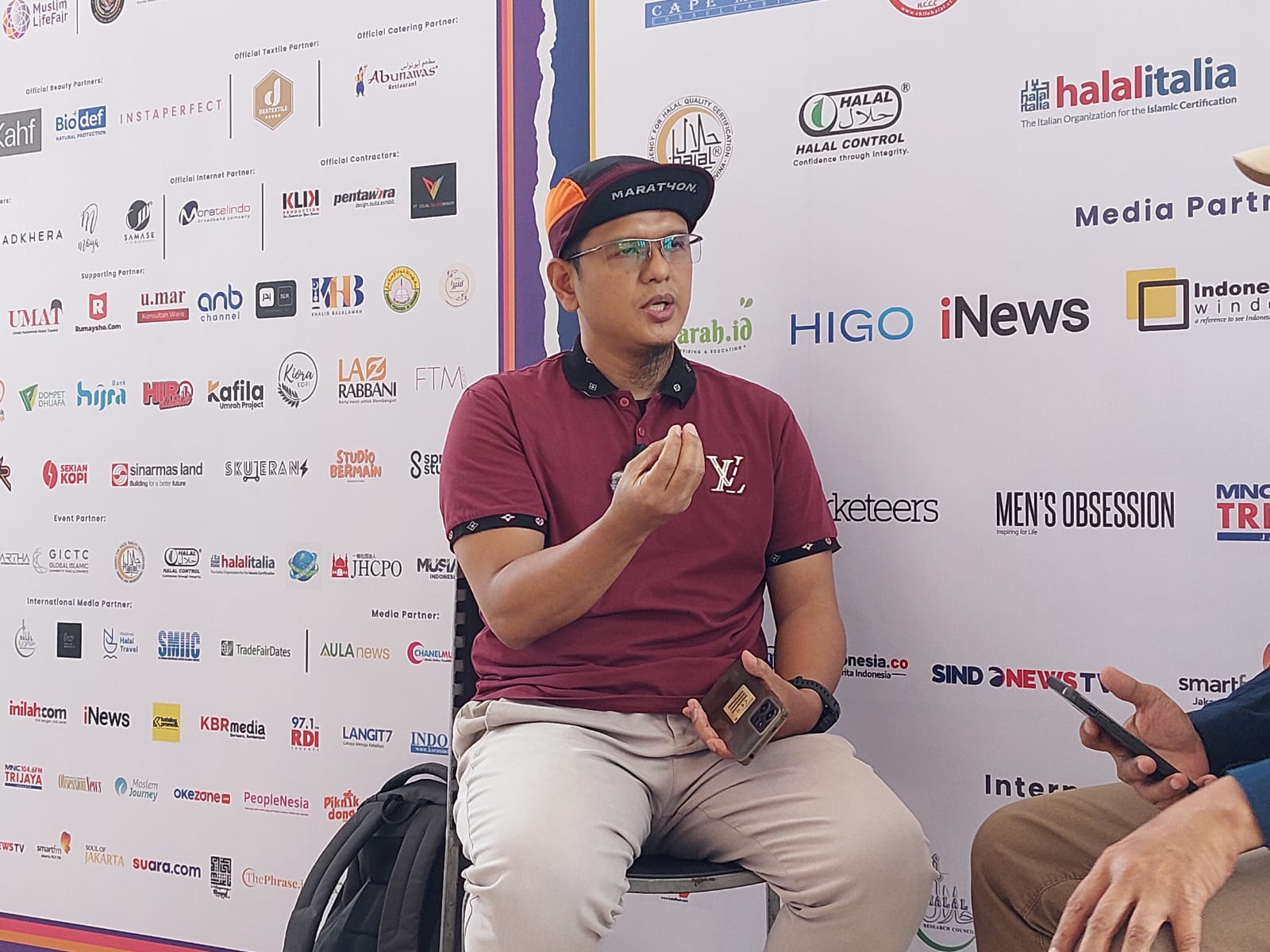Stone carvings found inside cave of China’s Longmen Grottoes

Stone carvings and building components inside the Leigutai caves in Longmen Grottoes, a UNESCO World Heritage site, in central China’s Henan Province, include a relatively well-preserved Buddha head, 38 centimeters in height and 22 centimeters in width, the remains of a Bodhisattva statue, and fragments of rosettes and patterns.
Zhengzhou, China (Xinhua) – Archaeologists have discovered more than 80 stone carvings and building components inside the Leigutai caves in Longmen Grottoes, a UNESCO World Heritage site, in central China’s Henan Province.
The relics were found inside the west wall of the south cave of Leigutai during maintenance and reinforcement work, according to the Longmen Grottoes research institute.
It is the first time archaeologists have found stone carvings inside the cave of Longmen Grottoes, according to Lu Wei, director of the history and humanities research center of the institute.
Located at the south end of the grottoes’ Dongshan area, Leigutai boasts three caves in the north, middle and south, and several small niches on the cliff outside the grottoes.

The unearthed items include a relatively well-preserved Buddha head, 38 centimeters in height and 22 centimeters in width, the remains of a Bodhisattva statue, and fragments of rosettes and patterns, among other items, said Lu.
Based on the comprehensive analysis of the archaeological excavation results of the Leigutai caves and the historical documents, the relics are thought to have been stacked up and embedded in the wall in the mid to late Ming Dynasty (1368-1644) and used as materials to repair and reinforce the cave walls in ancient times.
“The findings are of great value for the study of the stone carving art in the Tang Dynasty (618-907), the history and culture of Leigutai caves, and the maintenance and reinforcement works in ancient times,” said Lu.
Reporting by Indonesia Window

.jpg)








